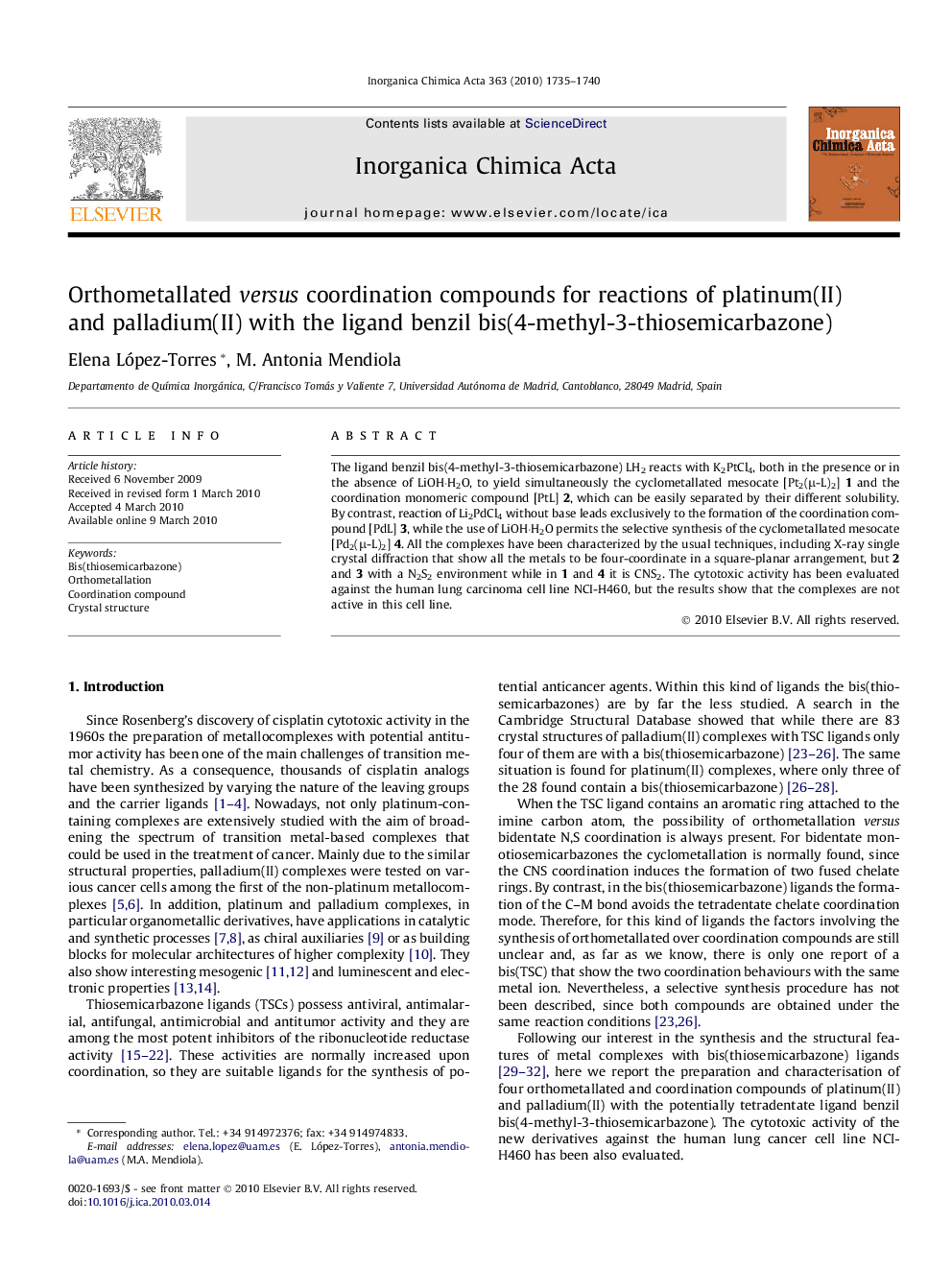| Article ID | Journal | Published Year | Pages | File Type |
|---|---|---|---|---|
| 1308179 | Inorganica Chimica Acta | 2010 | 6 Pages |
The ligand benzil bis(4-methyl-3-thiosemicarbazone) LH2 reacts with K2PtCl4, both in the presence or in the absence of LiOH·H2O, to yield simultaneously the cyclometallated mesocate [Pt2(μ-L)2] 1 and the coordination monomeric compound [PtL] 2, which can be easily separated by their different solubility. By contrast, reaction of Li2PdCl4 without base leads exclusively to the formation of the coordination compound [PdL] 3, while the use of LiOH·H2O permits the selective synthesis of the cyclometallated mesocate [Pd2(μ-L)2] 4. All the complexes have been characterized by the usual techniques, including X-ray single crystal diffraction that show all the metals to be four-coordinate in a square-planar arrangement, but 2 and 3 with a N2S2 environment while in 1 and 4 it is CNS2. The cytotoxic activity has been evaluated against the human lung carcinoma cell line NCI-H460, but the results show that the complexes are not active in this cell line.
Graphical abstractThe reactivity of K2PtCl4 and Li2PdCl4 with the ligand benzil bis(4-methyl-3-thiosemicarbazone) LH2 was investigated. The dinuclear mesocates [Pt2(μ-L)2] 1 and [Pd2(μ-L)2] 4 and the coordination compounds [PtL] 2 and [PdL] 3 were synthesised, whose structures were unambiguously determined by X-ray diffraction.Figure optionsDownload full-size imageDownload as PowerPoint slide
